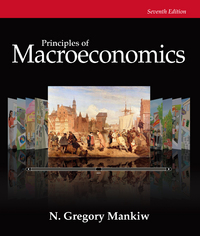Question
Antonio likes to have coffee (C) and donuts (D) for breakfast every morning. He likes to dip his donuts into his coffee, so for every
Antonio likes to have coffee (C) and donuts (D) for breakfast every morning. He likes to dip his donuts into his coffee, so for every cup of coffee, he eats one and a half donuts. In economic terms, we can say he views one cup of coffee as a perfect complement to one and a half donuts. The price of a cup of coffee is $4.5 and the price of one donut is $2. His budget for breakfast this month is $75.
(a) Write down a utility function that represents Antonio's preferences over (cups of) coffee (C) and donuts (D). (There may be many functions representing the same preferences, so you can choose either of them.)
(b) How many cups of coffee (C) and donuts (D) is he going to consume? (Hint: the first order conditions will not help; draw the budget constraint and the indifference curves and look at the highest indifference curve that has a point in common with the budget constraint).
(c) What is the exact value of Antonio's indirect utility for the utility function you chose in (a)?
Step by Step Solution
There are 3 Steps involved in it
Step: 1

Get Instant Access to Expert-Tailored Solutions
See step-by-step solutions with expert insights and AI powered tools for academic success
Step: 2

Step: 3

Ace Your Homework with AI
Get the answers you need in no time with our AI-driven, step-by-step assistance
Get Started


